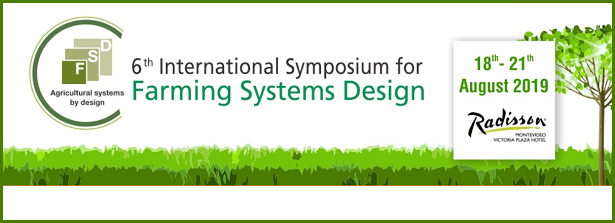Ver ítem
- xmlui.general.dspace_homeCentros Regionales y EEAsCentro Regional Buenos Aires NorteEEA PergaminoPresentaciones a Congresosxmlui.ArtifactBrowser.ItemViewer.trail
- Inicio
- Centros Regionales y EEAs
- Centro Regional Buenos Aires Norte
- EEA Pergamino
- Presentaciones a Congresos
- Ver ítem
Assessing the sustainability of alternative production systems in Argentine Pampas applying a discrete muti-criteria decision-aid method
Resumen
In recent decades the rural landscape of the Argentine Pampas has undergone a process of simplification due to the increase of land allocated to annual crops, replacing pastures and grasslands, with a strong increase in soybean area. While the expansion and
intensification of agriculture is related to economic growth, it has raised concerns about its social and environment impacts, and long-term sustainability of current production systems is questioned
[ver mas...]
In recent decades the rural landscape of the Argentine Pampas has undergone a process of simplification due to the increase of land allocated to annual crops, replacing pastures and grasslands, with a strong increase in soybean area. While the expansion and
intensification of agriculture is related to economic growth, it has raised concerns about its social and environment impacts, and long-term sustainability of current production systems is questioned (e.g., Flores & Sarandón, 2002; Wingeyer et al., 2015; Cabrini et al., 2018). There is an increasing interest in alternative production systems in order to mitigate environmental concerns related to agricultural simplification and monocultures (Andrade et al., 2017).
In the analysis of the heterogeneity of production systems and agricultural land use chosen by agricultural producers, the theory of utility based on multiple attributes (Berkhout et al., 2011) is an appropriate approach, since it allows to consider the different objectives of farmers and the importance that they assign to each one of them. The basic assumption underlying this theory is that the decision maker chooses the alternative that produces the greatest utility considering multiple attributes of a series of possible alternatives.
Aldo, there is a growing demand for a transformation of the current agricultural systems. This demand is based on the aspiration that these systems generate sufficient quality food that can be accessed by all people, with a low impact on the environment, making positive social and cultural contributions (Pretty et al. al., 2018). However, stakeholders (farmers, environmentalists, consumers and government) have conflicting views regarding the definition of the most suitable production system since they attach different values to the economic, social and environ- mental impacts of farming. A negotiation process is needed where every party should express their goals clearly, based on objective measurements of relevant farming impacts.
Multi-criteria Decision Modeling provides formal tools in the search of sustainable agroecosystems. This approach is consistent with the notion of multifunctionally of agriculture since allows to assess the performance of agricultural systems, considering several economic, social and environmental attributes at the same time (Sadok et al., 2009; Romero, 1996). This paper employed the discrete multicriteria method Promethee (Preference Ranking Organization Method for Enrichment Evaluations) (Brans, 1982) to asses alternative production systems for Pergamino Department, North of Buenos Aires. Four systems were compared in terms of a set of attributes, including economic, environmental and social indicators.
[Cerrar]

Autor
Bitar, María Victoria;
Cabrini, Silvina María;
Fuente
6th International Symposium for Farming Systems Design, Montevideo, 18 al 21 August 2019
Fecha
2019-08
Formato
pdf
Tipo de documento
documento de conferencia
Palabras Claves
Derechos de acceso
Restringido
 Excepto donde se diga explicitamente, este item se publica bajo la siguiente descripción: Creative Commons Attribution-NonCommercial-ShareAlike 2.5 Unported (CC BY-NC-SA 2.5)
Excepto donde se diga explicitamente, este item se publica bajo la siguiente descripción: Creative Commons Attribution-NonCommercial-ShareAlike 2.5 Unported (CC BY-NC-SA 2.5)

